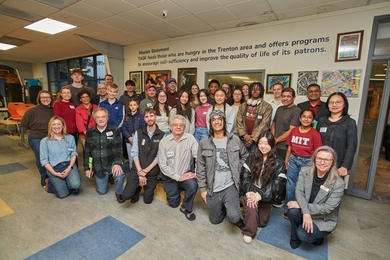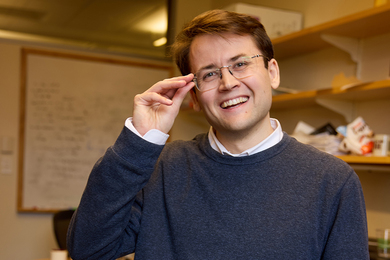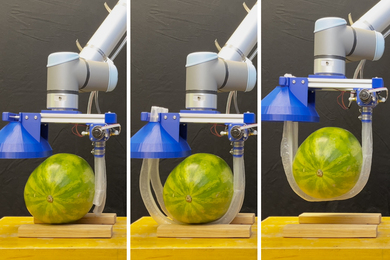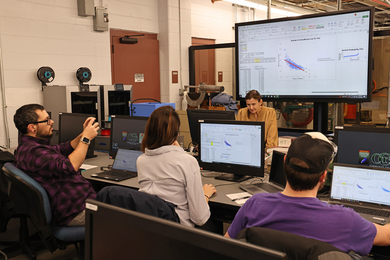Cambridge, MA--The School of Engineering and the Sloan School of Management at the Massachusetts Institute of Technology have joined with industry to launch an innovative graduate degree program for a new breed of technically grounded leaders. The pioneering System Design and Management (SDM) Program will also provide a platform for advancing the state-of-the-art of emerging interactive distance learning techniques at MIT, allowing students to complete most of their course requirements at their job sites.
"The SDM Program is designed to meet a growing need in industry that is currently unmet by any other program in academia," said MIT President Charles M. Vest. "Engineering degrees prepare you to design the pieces of such complex products as an aircraft or telecommunications systems, but not to integrate the entire process and manage it efficiently. And MBA programs don't address the specific needs of the complex engineering process."
Approved by the MIT faculty on November 15, the new SDM Program is aimed at providing experienced engineers with a special combination of advanced engineering and management skills required to lead the conception and creation of today's increasingly sophisticated products and complex systems. The MIT Corporation (the university's Board of Trustees) is expected to vote on the proposed new program at its quarterly meeting on December 1.
Although the full program won't be launched until January, 1997, a pilot program involving 11 students from the aerospace, automotive, computer, and telecommunications industries began in September. Company sponsors, who will help shape curriculum development and program delivery, include Ford, AT&T, Motorola, IBM, and Raytheon.
"This is the first time MIT will offer a degree that allows students at distributed industrial sites to participate in a regular academic program," said Provost Joel Moses, MIT's chief academic officer. "We believe strongly that the interaction and collegiality that occurs so easily among students and faculty on campus are essential to the educational process. One of our goals is to develop and test ways to provide those elements at a distance."
Students in the Program will receive a Master's degree in engineering and management jointly awarded by the School of Engineering and the Sloan School. To accommodate the needs of the mid-career engineer, SDM will offer two basic formats. An intensive on-campus version can be completed in 13 months. Alternatively, after an initial one-month session on campus, students may take courses part time for up to five semesters at their job site using distance learning techniques. During this period, they also work on a thesis related to their work experience. The degree is completed in a final semester on campus.
"SDM is an advanced practice-oriented professional degree program similar to those offered in law or medicine," explained Edward F. Crawley, professor of aeronautics and astronautics and co-director of the Program. "The distance learning option offers us a powerful new way not only to meet the needs of working engineers but also to develop a continuing collaboration with industry."
Initially, faculty will use state-of-the-art compressed video technology to interact with multiple remote sites during classroom sessions. The program will use the same technology for smaller-scale conferences and discussions at individual sites. In addition, it will distribute materials through the World Wide Web, communicate and exchange documents via e-mail, and conduct student-teacher conferences via desktop video.
According to Thomas L. Magnanti, professor of management science and co-director of the Program, both the technology and the teaching techniques will evolve over time. "Only now are educators beginning to understand how to teach and learn effectively at a distance," he explained. "As in other areas at MIT, we feel that the surest route to progress is to build upon what we know and do well, conducting some experiments and pushing the frontiers."
SDM reflects widespread interest and activity in advanced educational technology at MIT. At the request of President Vest, an ad hoc committee on Education via Advanced Technologies recently explored opportunities for MIT involving such technologies as the Internet, CD-ROMs, hypertext, hypermedia, personal portable communication, personal portable computation, and interactive television.
Among the committee's recommendations are to establish an Institute-wide competition among faculty for support of curriculum development projects that make effective use of advanced technologies, and to make specific plans for examining the opportunities and risks associated with new educational markets.
MIT's Center for Advanced Educational Services, which has long provided a range of advanced training opportunities for engineers--including videotaped courses--is also responding to the challenge. The Center's mission has been expanded to include active exploration of new uses of computer technology in education.
SDM is the first formal attempt at MIT to integrate today's rapidly emerging distance learning technologies into a degree program. "There's an enormous sense of opportunity here," said Provost Moses. "At MIT, education is our business, and technology is our strength. This is a natural arena for us to pioneer."





